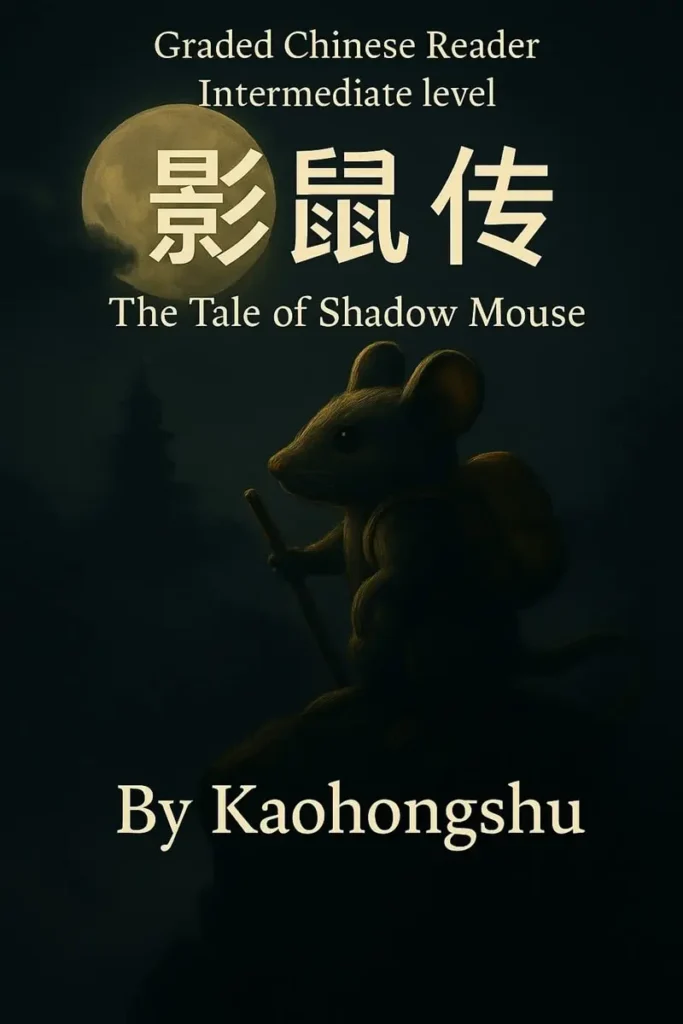Journey to the West is one of China’s Four Great Classic Novels. Reading the original classic about Buddhist monk Xuanzang and his three disciples by yourself is considered rather advanced stuff, after all it’s a lengthy piece of Chinese literature dating back to 16th century. You could, of course, read a translated version or watch one of the many TV-adaptations, but if you still want to have read it in Chinese, the Pleco dictionary app offers a solution. It’s an abridged and simplified version of Journey to the West which is much easier and more fun to read for Mandarin learners.

Pleco’s version of the story is – I’d say – suited for HSK level 4 or 5 (between 1200 and 2500 words). The vocabulary is narrowed down to those characters you’re supposed to know when you are somewhere between HSK 4 and 5. The official recommendation is HSK 5 though, so it might proof a little ambitious for HSK 4, but that level should bring you a long way.
The graded reader is divided into 37 chapters of about 1500 characters each. Every chapter is just two or three pages long, at the end of which, you’ll find a number of additional notes, giving you some background on Buddhist figures, monsters, names and places. Usually, there are some questions to check your comprehension.
The original novel, by the way, has 100 chapters and is definitely not the kind of book you can read in a week. If you want to get an impression of the difficulty level, you can check the picture slide show below. It shows an image of the first page of the first chapter from the copy I brought from China.
I can’t say Pleco’s 西游记 is very exciting to read, but then again, this is a simplified version for studying Mandarin. It allows you to read one of the great Chinese classics in Mandarin which is something not few Mandarin learners have always been dreaming about.
So be prepared to read a simplified and summarized version of a long and complex story which describes the Tangseng’s adventures in chronological order, using a limited vocabulary.
BUT, that being said, the Pleco version of Journey to the West is excellent material to speed up your reading. Repetition plays a key role in this. And you can learn quite a lot about Chinese folk religion, mythology, Confucianist, Taoist and Buddhist philosophy on the side.
The current price of 10,99€ is still rather high for an e-book or – to be precise – an add-on in Pleco. You could expect a text-only adaptation of a classic – the Pleco reader probably doesn’t support any artwork – to be cheaper maybe, so I’m hesitant to buy any of the other three Great Classics. If you want to have a taste of the extended version, but don’t feel ready for the book itself, you could combine reading the Pleco graded reader with the 1986 TV-series.
Do you have any Chinese reading material you would recommend or are disappointed about? Please leave a comment below.
Disclosure: These are affiliate links. They help me to support this blog, meaning, at no additional cost to you, I will earn a small commission if you click through and make a purchase.
Other posts on Kaohongshu






















I have a vastly different (and move positive) opinion of this graded reader. But perhaps that’s because my native language is not mandarin (though I have been exposed to Chinese since young). I also take issue with a number of points raised in this article.
1. The fact that this ebook can be viewed on the Pleco app itself means that one can very easily and quickly search up an unknown term simply by selecting that particular term. This makes reading this ebook as easy as reading any article/story on the Du Chinese App. (However, the Du Chinese App still has a slightly superior way of saving unknown words for later review. On the Du Chinese App, the saved words also display the sentence in which the saved words were originally used. Pleco does not have this function – it’s “just” a dictionary.) The integration of the ebook with a Chinese dictionary makes it far easier to learn new words through reading.
2. For someone whose Chinese proficiency is slightly above HSK 4 but well below HSK 5, I find this graded reader very well written. I did not spot any unidiomatic expressions, for one. And the fact that certain terms are repeated is actually beneficial to learners of Chinese mandarin (as the author of the article him/herself acknowledge) because such repetition helps with retention of new words.
3. The author of the article contends that this graded reader “reads as if a 10-year-old is summarizing a long and complex story by describing what happened in chronological order, using the same words over and over again”. I have two comments. First, I personally did not find the repetition of words to be excessive. On the contrary, I found it beneficial. Second, the abridged version is still very engaging. And the descriptions are vivid. But full disclaimer: I have not read the original version of 西游记.
4. The author notes that “[t]he graded reader is divided into 37 chapters of about 1500 characters each. Every chapter is just two or three pages long, at the end of which, you’ll find a number of additional notes, giving you some background on Buddhist figures, monsters, names and places. Usually, there are some questions to check your comprehension.”. I just wish to highlight two things in relation to these notes. First, these notes are really useful in helping the reader understand the story better. Second, the story itself does not contain too many difficult words. But the additional notes are written at a fairly advanced level, almost as if the authors want to flaunt their linguistic skills, after the shackles of having to write using a limited number of words are no longer imposed on them.
5. The author argues that “[t]he current price of 10,99€ is rather high for an e-book or – to be more precise – an add-on in Pleco. I’d expect a text-only adaptation of a classic – the Pleco reader probably doesn’t support any artwork – to be cheaper, so I doubt that I’ll buy any of the other three Great Classics. I’ll probably look for a Chinese children’s version instead, which can be found in almost any Chinese bookstore.”. I challenge the author to cite specific examples of children’s adaptation of 西游记 which allow one to search up unknown terms as easily as this ebook, are better written than this ebook, whilst also containing useful explanatory notes after each chapter.
Hello A,
Thanks so much for taking the time to comment. I really appreciate your feedback. It makes me realize I might have been a little too harsh in my review, but I don’t believe we disagree as strongly as you think:
1. I agree. Looking up words in the Pleco reader or clipboard reader is both extremely convenient and useful. (I use the clipboard reader on a daily basis.) Reading Mandarin has probably never been so convenient for learners. The same goes for this Pleco graded reader.
2 and 3: You got a point here and I have to clarify what I wrote. What did I mean by “well written”? You could make the argument that this version of 西游记 is indeed very “well written” – for a graded reader which “operates” with a limited vocabulary created for a specific language level group. What I was referring to – somewhat unjustly maybe – is the aesthetic dimension. Aesthetically I didn’t find this version very enjoyable. But then again, that’s probably an unreasonable thing to expect, since it takes a lot of time before you can enjoy great works of literature in their original language, arguably still less in Mandarin. Plus, it could well be connected with the nature of this classic and the way the story is told, very different from the standards of modern literature.
4. Yes, the notes are helpful and usually – like you pointed out – they are a little more difficult to understand than the story itself.
5. As for the price: graded readers (both e-books and print) are still in limited supply, especially for the HSK levels 4 / 5 / 6. It’s a long process to create this kind of quality learning materials and the group of potential buyers is relatively small. That considered, the price is not that unreasonable. I can only hope that Pleco will make its readers more affordable in the future, but I haven’t seen any evidence of it yet.
As for the challenge: I accept it, but it has to wait until China admits foreign visitors again. I know I won’t find any books with Pleco’s search function integrated into them, but I might find a version that’s closer to the original, which is illustrated and still enjoyable to read.
Anyway, cheers!
I did read the first chapter of this.. didn’t buy it though.. It’s available ar Sinolingua website for 5 dollars. Though Sinolingua’s reader sucks.. I bought Romance of Three Kingdoms graded reader on Sinolingua, after that I read the abridged version meant for primary 5 students in China (240 pages). I think it’s an effective way to learn 🙂 It will be more difficult without this graded reader as a stepping stone.
Nice! I also think the abridged version for primary school is a good option and easy to get by in China or from Chinese friends.